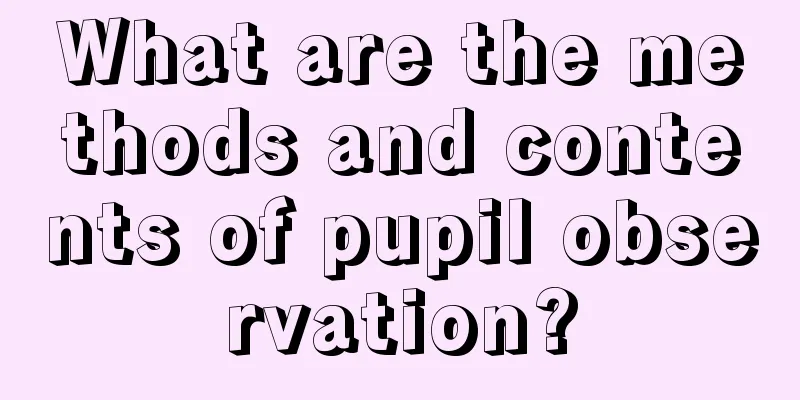What are the methods and contents of pupil observation?

|
The pupil is very important to the human body. If there is a problem with the pupil, it will easily lead to some eye diseases. It will also easily affect vision and cause vision loss, which will greatly affect normal life and work. The pupil observation method and content is an inspection method based on whether the pupil has any abnormal reaction. The light can be shined on the eye for inspection. How and what should pupils be observed? Normal value A normal pupil is round, black and transparent, equal in size on both sides, and about 2.5 mm in diameter. In addition to changes in physiological regulation, if the pupil diameter is less than 1.5 mm or greater than 5 mm, the edge is irregular, the color is abnormal, the reaction to light is slow or absent, etc., it often indicates the occurrence of certain diseases. Clinical significance Abnormal results: White pupils are seen in cataracts, iridocyclitis, glaucoma, eye trauma, high myopia, or systemic diseases such as diabetes. Green pupils are common in glaucoma. People who need to be checked: patients with cataracts, glaucoma, and myopia. Precautions Unsuitable people: those with no special inflammation in the eyes. Taboos before examination: Irritable mood will affect pupil examination. Requirements during the examination: Lie down quietly and do not use too strong light. Inspection process (1) Direct reaction to light: The patient is asked to sit facing the light with both eyes looking straight ahead at a distance of 5 meters. The examiner covers both eyes of the patient with the palm of his hand, removes the cover of one hand and observes whether the pupil of that eye contracts. Then he covers this eye again and removes the other hand to observe whether the other pupil contracts. The speed and degree of contraction of the two pupils are compared. (2) Indirect light reaction or sympathetic reaction: the patient is also asked to sit facing the light, one eye of the patient is covered, and when the cover is removed, the contraction of the pupil of the other eye is observed. Related diseases Heterochromic iridocyclitis, primary juvenile glaucoma, primary infantile glaucoma, glaucoma caused by penetrating keratoplasty, glaucoma secondary to aphakia and pseudophakia, glaucoma caused by increased episcleral venous pressure, neovascular glaucoma, pigmentary glaucoma, drug-related glaucoma, crystalline protein allergy glaucoma Related symptoms Painful and sticky eyes, sticky tears, blurred vision, sudden blindness, glaucoma spots on the lens, glaucoma spots, juvenile cataracts The pupil examination includes checking the pupil's appearance and pupillary reflexes. The external examination includes the size, shape, number, position of the pupils, and whether the edges are neat. The two sides should be compared during the examination. |
<<: I always get startled when I sleep
>>: What is the reason for a grayish-white circle around the pupil?
Recommend
What are some common sense tips for autumn life
From summer to autumn, the climate changes from h...
How to get rid of cockroaches most effectively
Cockroaches are common insects in our lives, and ...
What to do about hair loss caused by seborrheic dermatitis?
The most obvious feature of seborrheic dermatitis...
How to blow dry your hair after washing it so it doesn't become frizzy
Many friends are accustomed to using a hair dryer...
What factors can cause bladder cancer
Bladder cancer is not a very common disease in ou...
Can babies eat raisins
Grapes are a very popular fruit in our lives. Peo...
Will chickenpox leave scars?
Acne on the face is very distressing for young pe...
Can radiation protection clothing be washed?
Anti-radiation clothing is also called electromag...
Consequences of not wearing glasses for astigmatism
Astigmatism, like myopia, is also a type of perso...
What to do if the hairline on both sides moves back
The receding hairline actually has a huge impact ...
What is the difference between edema and obesity?
Many people are worried about obesity. The reason...
Early prevention of colorectal cancer
Speaking of colorectal cancer, many of us will fe...
How to reduce the pain caused by lung cancer treatment. This can reduce the pain caused by lung cancer treatment
How to reduce the pain caused by lung cancer trea...
Diseases that are easily confused with bile duct cancer
Although bile duct cancer has some obvious sympto...
Symptoms before death from late stage bile duct cancer
Cholangiocarcinoma is one of the common malignant...









